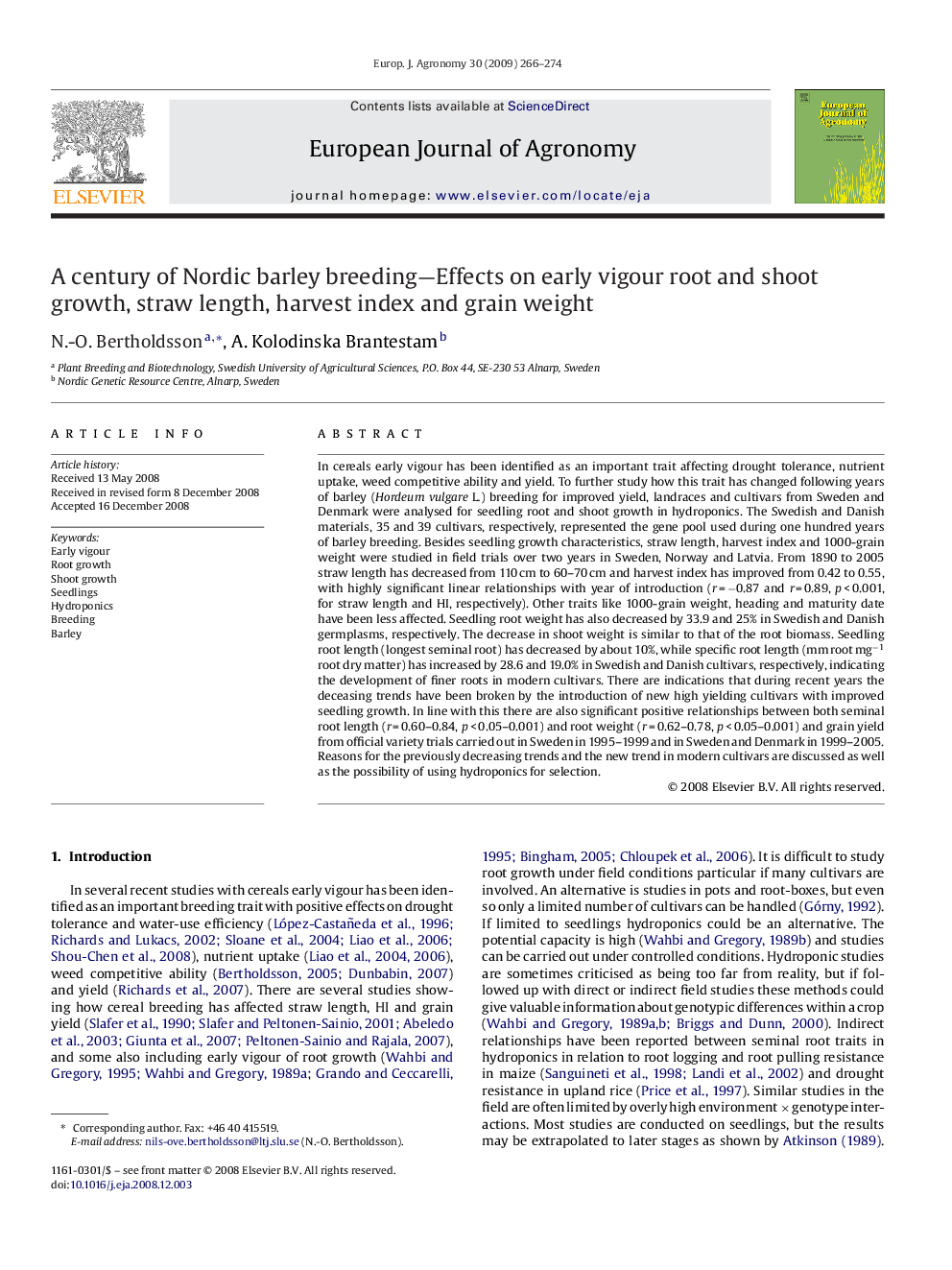| Article ID | Journal | Published Year | Pages | File Type |
|---|---|---|---|---|
| 4509442 | European Journal of Agronomy | 2009 | 9 Pages |
In cereals early vigour has been identified as an important trait affecting drought tolerance, nutrient uptake, weed competitive ability and yield. To further study how this trait has changed following years of barley (Hordeum vulgare L.) breeding for improved yield, landraces and cultivars from Sweden and Denmark were analysed for seedling root and shoot growth in hydroponics. The Swedish and Danish materials, 35 and 39 cultivars, respectively, represented the gene pool used during one hundred years of barley breeding. Besides seedling growth characteristics, straw length, harvest index and 1000-grain weight were studied in field trials over two years in Sweden, Norway and Latvia. From 1890 to 2005 straw length has decreased from 110 cm to 60–70 cm and harvest index has improved from 0.42 to 0.55, with highly significant linear relationships with year of introduction (r = −0.87 and r = 0.89, p < 0.001, for straw length and HI, respectively). Other traits like 1000-grain weight, heading and maturity date have been less affected. Seedling root weight has also decreased by 33.9 and 25% in Swedish and Danish germplasms, respectively. The decrease in shoot weight is similar to that of the root biomass. Seedling root length (longest seminal root) has decreased by about 10%, while specific root length (mm root mg−1 root dry matter) has increased by 28.6 and 19.0% in Swedish and Danish cultivars, respectively, indicating the development of finer roots in modern cultivars. There are indications that during recent years the deceasing trends have been broken by the introduction of new high yielding cultivars with improved seedling growth. In line with this there are also significant positive relationships between both seminal root length (r = 0.60–0.84, p < 0.05–0.001) and root weight (r = 0.62–0.78, p < 0.05–0.001) and grain yield from official variety trials carried out in Sweden in 1995–1999 and in Sweden and Denmark in 1999–2005. Reasons for the previously decreasing trends and the new trend in modern cultivars are discussed as well as the possibility of using hydroponics for selection.
